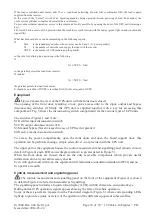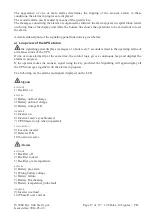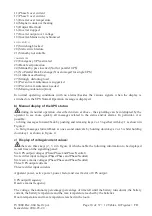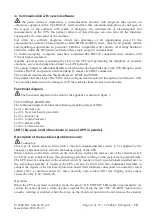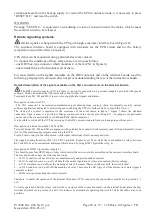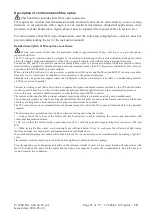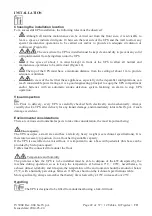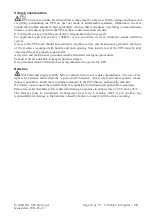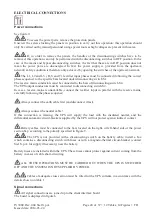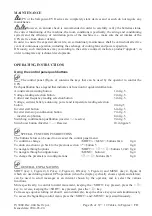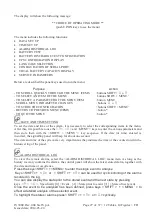
IV306E Rev. 004 Siel S.p.A.
Page 12 of 37 + 12 Tables, 14 F FR
Issued date: 2014-03-24
- One STATIC SWITCH (6) which, when the inverter is overloaded or locked, transfers the load to the
mains ensuring that the load is continuously supplied.
- One OUTPUT SWITCH S2 which can completely disconnect the UPS from the load.
- One S4 RESERVE LINE SWITCH COMPONENT enabling reserve line disconnection from the
static switch.
- This switch also has FUSES (9) to protect the semiconductors of the static switch from output short-
circuits.
- One S3 manual BY-PASS consisting of a disconnecting switch component which enables the
load to be powered directly, excluding the UPS through the other disconnecting switches. The
manual by-pass is not included in UPSs suited for in-parallel operation and must be envisaged
externally as a general system bypass.
The rectifier/battery charger (3) changes the mains voltage into a regulated and filtered direct voltage,
suitable to re-charge the battery and keep it charged. In the meantime the rectifier also supplies the
necessary voltage for inverter operation. The inverter (4) (type IGBT with PWM modulation) takes
voltage from the rectifier and supplies, through transformer (5), the loads with an alternating voltage
featuring very low distortion and constant frequency and amplitude.
If the mains fails, the rectifier stops and the batteries (10) supply the necessary power to make the
inverter work until the batteries are discharged or the mains is restored. This situation is maintained
until batteries are low or until mains power is restored.
A special circuit stops inverter operation when the battery voltage reaches dangerously low levels.
The inverter stop voltage (end-of-discharge voltage) is changed according to the discharge current
function so as to eliminate any chance of damaging the elements.
When the mains supply is restored, the rectifier starts working again, recharging the batteries and
supplying the inverter.
The rectifier starts up gradually (soft-start circuit) to avoid any over current when the equipment
starts.
1
.
If the UPS has maintenance-free batteries, the recharge occurs with limited current until the floating
voltage is reached (also called maintenance voltage).
the maintenance voltage is suitably changed according to battery temperature (if the UPS is supplied
with inside battery or if the battery cabinet features a special heat probe).
If the UPS is connected to vented-type lead acid batteries, a higher voltage is reached (boost charge
voltage) which is only maintained until the battery is completely recharged. Then the voltage returns to
the floating value.
The charge criteria are defined in the I-U specification of Standard DIN 41773.
Thanks to the technology adopted, the efficiency of the apparatus remains very high, already starting
with fairly low loads; this provides considerable energy saving (without sacrificing the specifications
of double conversion operation) in normal operating conditions and with the in-parallel operation of
several appliances.
The static switch permits supplying the load through the mains in case of strong overload of the
inverter or of an inverter fault. Once the abnormal condition is over, the load is automatically supplied
by the inverter.
If a reserve mains - separated from the rectifier mains - is not available, it is necessary to connect the
terminals of both input mains in parallel.
All the operating conditions are locally signalled both through a luminous (synoptic) functional
diagram (Fig. 5) and messages on the control panel (Fig. 4).
The signals are sent through the “customer interface board” (Fig. 6) as described in paragraph
«Description of the remote signalling systems».
1:In case of in-parallel operation, the appliances can be provided with a circuit for the sequential start of the UPS rectifiers

















